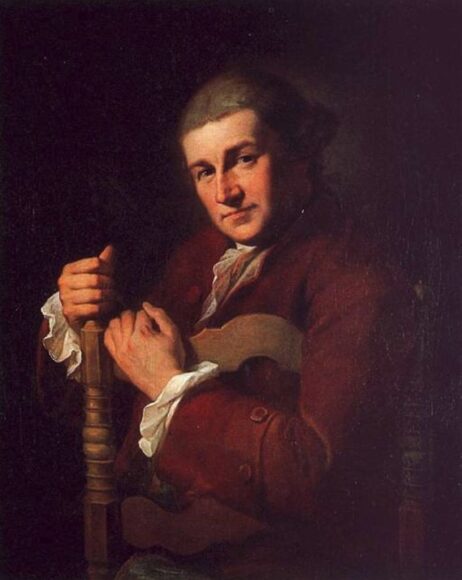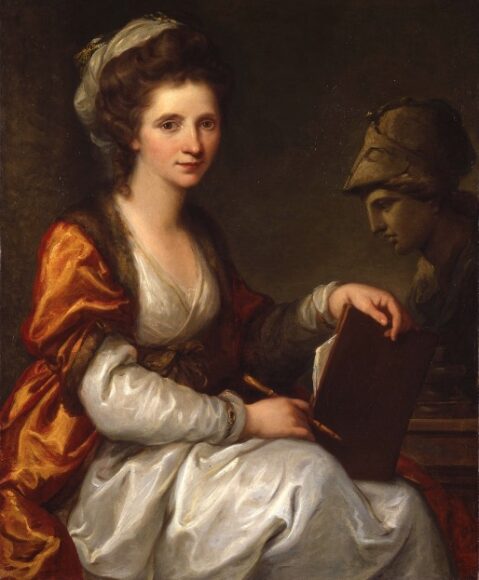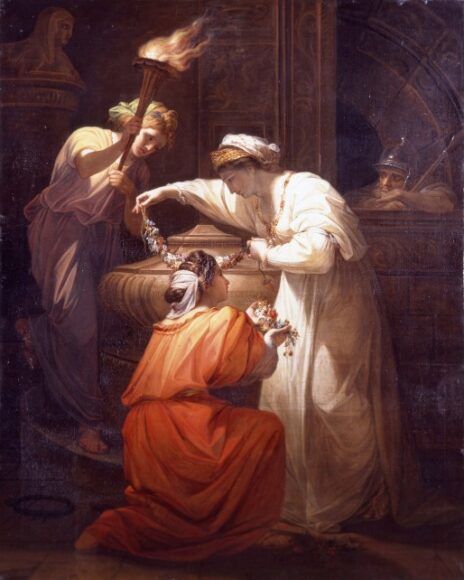The trouble with Angelica Kauffman, whose work has arrived at the Royal Academy in a well-meaning but irritating tribute, is that she was so uneven. She had her moments. There weren’t enough of them.
The show that proves this sets out to do the opposite, of course. The ambition here was to shift Kauffman (1741-1807) to a higher rung on the ladder of art and enjoy her prominent contribution to the female side of the story. She was, after all, a founder member of the Royal Academy, one of only two women in the opening cadre. This makes her an excellent presence. But not, alas, an excellent painter.
She learnt her trade from her father, a journeyman artist who gave her a peripatetic childhood that bounced between Switzerland, where she was born, Austria and Italy. In the course of these travels she learnt not only the rudiments of painting but also how to converse with clients in four languages: German, Italian, French and English. The last came in especially useful when the family settled in Rome and she came into regular contact with British voyagers on the Grand Tour.

Then, as now, travelling Brits were hopeless at foreign tongues. Kauffman’s ease in their language made her a popular choice when it came to having their portraits done. Most notably she painted David Garrick — the actor, show-off and impresario — who sang her praises loudly when he returned to London. Sensing an opportunity, she followed him there and swiftly launched a successful British career.
Her portrait of Garrick, from 1764, turns up in the show’s first room. He’s sitting backwards in his chair, Christine Keeler-style, a pose invented by Frans Hals a century earlier that makes sitters look alert and unstuffy. The cheeky position does much of the heavy lifting in the picture and allows the weak characterisation of Garrick’s face to be forgiven.
When not painting hopeful likenesses of Grand Tourists, Kauffman specialised in two other modes. The least successful of these was her “history painting”: big subjects, drawn from myth, religion and literature, with ambitions to make the viewer a better person.

This pompous mode was all the rage in late-18th-century Europe. Men pretended to be Spartans. Women dressed as goddesses. In real life the Industrial Revolution was picking up speed and the smoke was belching, but in the posh salons of the art world the taste had grown for classical heroes and vestal virgins.
Kauffman’s contribution to the genre, applauded loudly in the paperwork for the show, was to enlarge the role of the female protagonists and pick stories that cast women in a heroic light. Thus she painted Penelope waiting faithfully for the return of her husband, Odysseus, from the Trojan Wars; or Eleanora Sucking the Venom out of the Wound of her husband, King Edward I, a scene from Britain’s medieval history that Kauffman transported awkwardly to ancient Rome.
It’s silly art. And although the heroines are indeed made prominent, the qualities they are so loudly exhibiting — fidelity to their husband, patience as they wait, extreme self-sacrifice — are the same qualities the blokes of the age were seeking to impose on their womenfolk. Nowhere in Kauffman do you get the thrilling independence of spirit exhibited a century earlier by Artemisia Gentileschi or the obvious pictorial excellence of Judith Leyster or Michaelina Wautier.

The pretend mythologies highlight her lack of fluency. She has trouble with picture depth; trouble with anatomy; trouble with composition. In Cleopatra Adorning the Tomb of Mark Antony the badly painted torch flames — wooden flames? — splatter impossible light across the darkness. In Armida Begs Rinaldo in Vain not to Leave Her, the reflections on Rinaldo’s helmet make no sense; his body is as flat as a playing card; the landscape looks like green cotton wool.
Much more successful is her second mode — as a serial self-portraitist. Kauffman painted more than 20 self-portraits. The present event foregrounds her interest in herself by kicking off the show with an intriguing assortment.
The me-portraits have a psychological edge that is missing in the daft mythologies. In most of them she makes herself look younger. In the 1787 version, done when she was 46, she takes 20 years off her age and dresses “all’antica” in the maiden whites of a vestal virgin.
She was certainly not the first female artist to be this interested in her own presence. Among distaff old masters it was a recurring trait. It’s a tendency begging for a thesis.
The self-portraits stand out. A few of her likenesses of others, notably of Sir Joshua Reynolds, a friend and supporter, feel suddenly deeper. The best allegories have a wristy looseness to them. But the good moments are rare.
Angelica Kauffman is at the Royal Academy until Jun 30; Fourth Plinth is at the National Gallery until Mar 17
